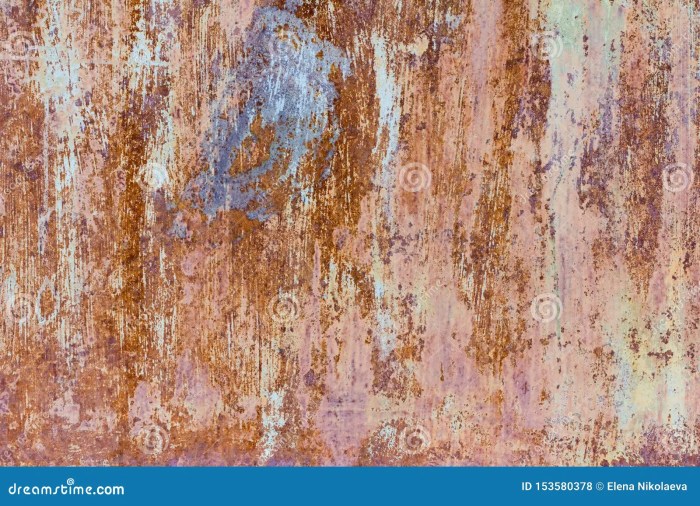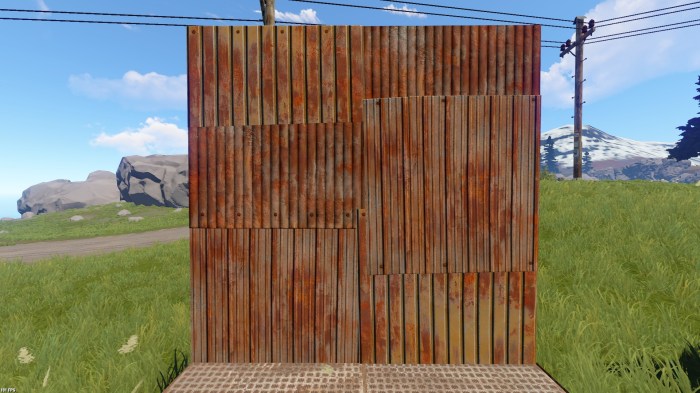Sheet metal wall rust, a common problem that affects the structural integrity and aesthetic appeal of buildings, demands attention. This comprehensive guide delves into the causes, consequences, and effective strategies for preventing, mitigating, and repairing sheet metal wall rust, providing valuable insights for homeowners, contractors, and building managers.
Understanding the nature of sheet metal wall rust, its impact on building structures, and the techniques for its prevention and repair empowers individuals to safeguard their properties and maintain their structural integrity.
1. Introduction
Sheet metal wall rust is a common problem that can occur when sheet metal is exposed to moisture and oxygen. It can cause significant damage to the metal, and if left untreated, can lead to structural failure.
2. Identifying Sheet Metal Wall Rust
Sheet metal wall rust is typically characterized by a reddish-brown appearance. It can be either surface rust, which is a thin layer of rust that does not penetrate the metal, or severe corrosion, which is a deep rust that has penetrated the metal.
Surface rust can be removed with a wire brush or sandpaper, while severe corrosion may require more extensive repairs, such as patching or replacement.
3. Consequences of Sheet Metal Wall Rust

Rust can cause significant damage to sheet metal walls, including:
- Structural damage: Rust can weaken the metal, making it more susceptible to bending or breaking.
- Loss of integrity: Rust can compromise the integrity of the building, making it less resistant to wind and other forces.
- Moisture penetration: Rust can create holes in the metal, allowing moisture to penetrate the building and cause further damage.
4. Prevention and Mitigation of Sheet Metal Wall Rust

There are several steps that can be taken to prevent and mitigate sheet metal wall rust, including:
- Proper surface preparation: Before applying any coatings, the metal should be properly prepared by cleaning and removing any dirt or debris.
- Protective coatings: Applying a protective coating to the metal will help to seal out moisture and oxygen and prevent rust from forming.
- Regular maintenance: Regularly inspecting the metal and repairing any damage will help to prevent rust from developing.
5. Repair and Restoration of Rusted Sheet Metal Walls

If sheet metal walls have already rusted, there are several techniques that can be used to repair and restore them, including:
- Rust removal: Rust can be removed using a wire brush, sandpaper, or a chemical rust remover.
- Patching: Small areas of rust can be repaired by patching the damaged area with a new piece of metal.
- Replacement: If the rust is extensive, it may be necessary to replace the entire sheet metal wall.
6. Case Studies and Examples

There are many examples of successful sheet metal wall rust prevention or repair projects. One example is the restoration of the Empire State Building in New York City. The building’s exterior was covered in sheet metal, which had rusted over time.
The metal was repaired and restored, and the building was repainted. The Empire State Building is now a landmark and a symbol of New York City.
FAQ: Sheet Metal Wall Rust
What are the early signs of sheet metal wall rust?
Early signs include discoloration, surface pitting, and flaking of the paint or protective coating.
How can I prevent sheet metal wall rust?
Regular cleaning, proper drainage, and the application of protective coatings are effective preventive measures.
What are the consequences of neglecting sheet metal wall rust?
Neglecting rust can lead to structural damage, reduced building integrity, and increased repair costs.
